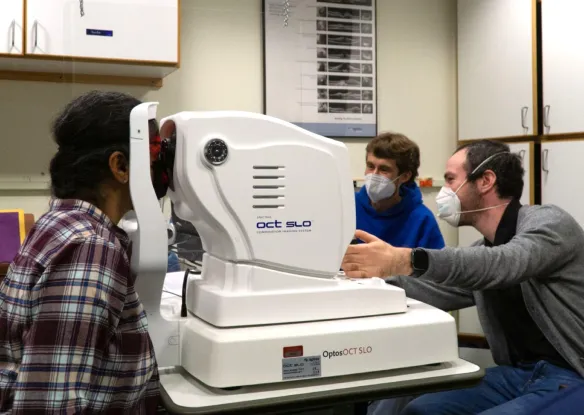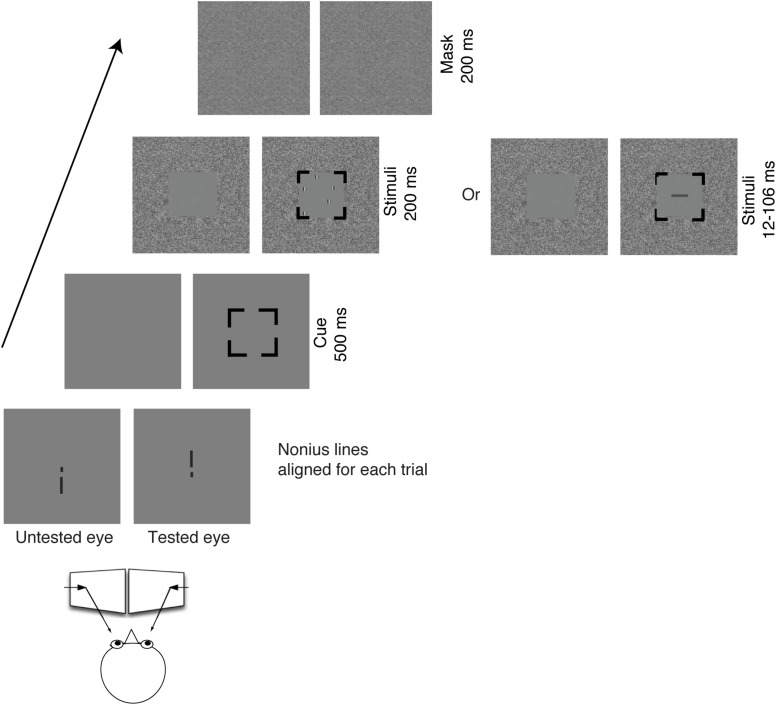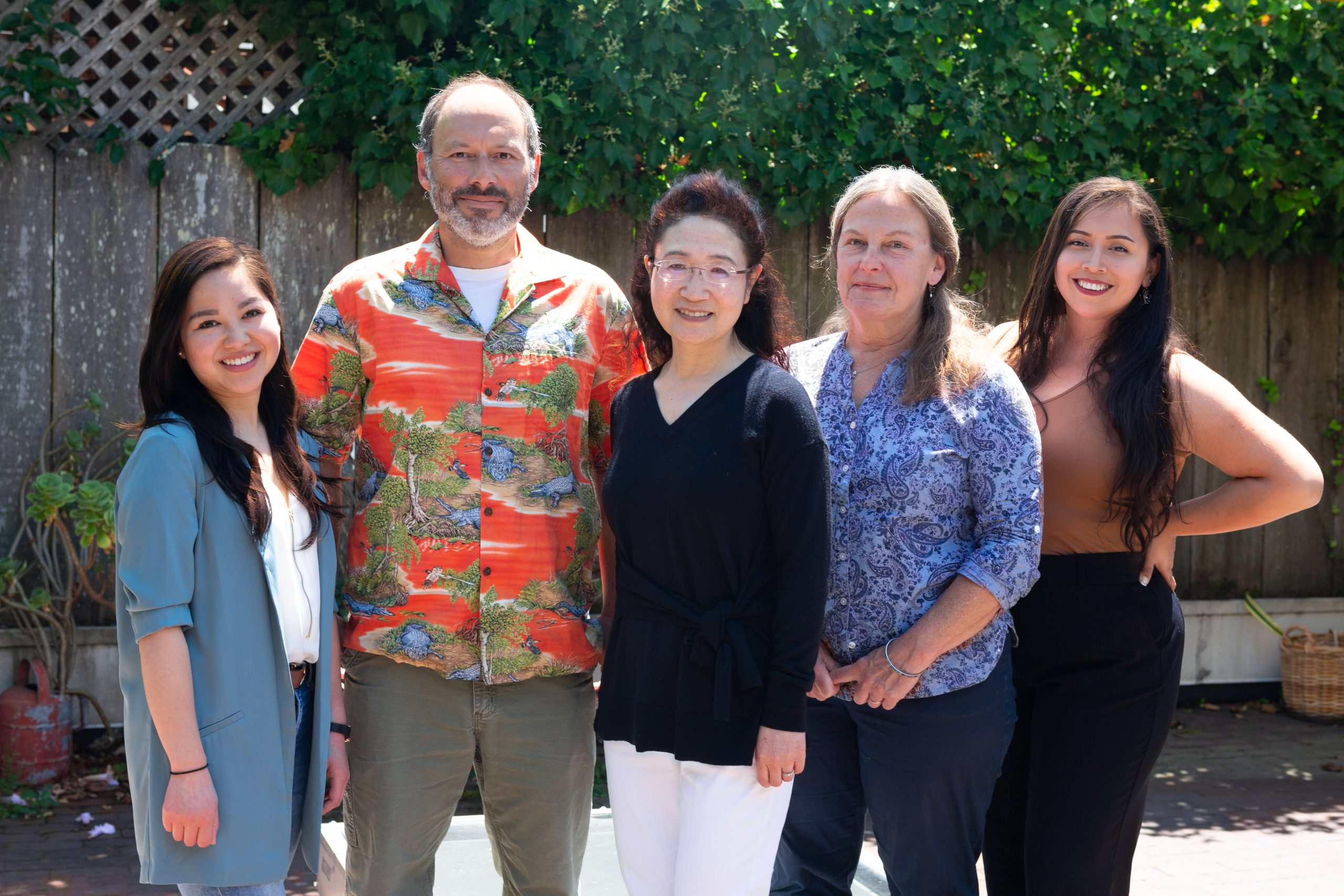The research in my lab focuses on the sensory processing in binocular vision and its disruption by amblyopia and strabismus. The current project is to use EEG source imaging combined with psychophysics and pupil tracking to investigate the role of

Principal Investigator:
Chuan HouIndividuals with strabismus are confronted with double vision, their brain has to choose to attend to one image and ignore or suppress the other. It has been commonly suggested that a constant suppression on the non-preferred eye in strabismus is responsible for the development of amblyopia. In the current project, we study the role of top-influences of attention in amblyopic suppression and test the hypothesis that visual suppression in amblyopia may be a form of long-term attentional “neglect”.
Individuals with strabismus are confronted with double vision, their brain has to choose to attend to one image and ignore or suppress the other. It has been commonly suggested that a constant suppression on the non-preferred eye in strabismus is responsible for the development of amblyopia. In the current project, we study the role of top-influences of attention in amblyopic suppression and test the hypothesis that visual suppression in amblyopia may be a form of long-term attentional “neglect”.
Publications
Journal Article
Centers
Smith-Kettlewell Brain Imaging Center
PublicationsProjectsLabsPeopleNewsEvents Publications Journal ArticlesConference PapersPresentations/PostersOther Publications Projects ActiveCompleted Labs People Current News Events
Get Involved
If you are interested in vision science or want to learn more about low vision and blindness, there are many opportunities to get involved at The Smith-Kettlewell Eye Research Institute.



